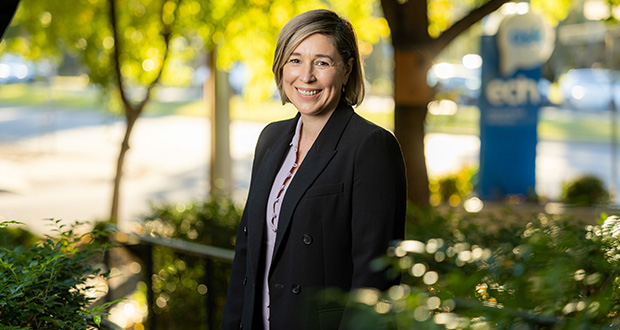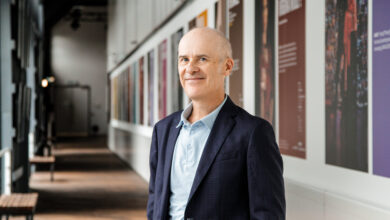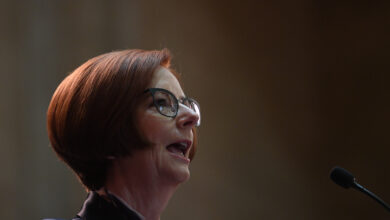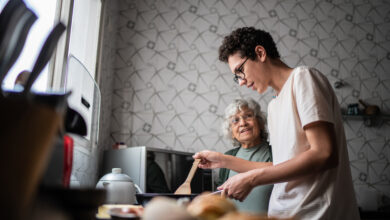Aged care provider chief speaks on female leadership: Q&A

One of Australia's largest aged care providers has said it would like to see more women in leadership roles in the sector.
In light of last week's International Women's Day, Aged Care Insite spoke with ECH chief Claire Scapinello, who assumed the role in June last year after twenty years of executive experience in residential property, aged care and retirement.
Globally, 19 per cent of women are in CEO roles, and 32.5 per cent hold key management positions.
Aged care provider ECH's chief executive Claire Scapinello said women are still more likely to sit back and question whether they're ready for a leadership role.
"Confidence plays a major role in the jobs we choose to put ourselves forward for," Scapinello said.
"But it's about whether you got the experience and qualifications for a position, irrespective of whether you're female or not."
Scapinello told Aged Care Insite that anyone looking to progress to a specific role should create a development plan, regardless of gender.
ACI: How did you get to your current role and what has it been like for you as a woman in a leadership position?
CS: I feel very fortunate to have worked in mostly female-empowered sectors.
It was a great opportunity from a career perspective to continue my career development and professional development with some really strong and credible female leaders to learn from.
In that respect, many of them were trailblazers in their own area.
I think for me that was something that made me want to aspire to where else I can go from a professional development perspective.
I started my career in customer facing roles, such as retail where she spent 15 years.
After retail, I moved into the property industry. One of the interesting aspects of that sector is that it's highly male-orientated.
The company I worked for was very focused on gender equality and gender diversity.
It gave me a great appreciation that gender should never be why you're not putting yourself forward in professional development.
I believe that everyone deserves a seat at the table as much as the next person.
I didn't look at myself or compare myself from a gender perspective - I compare myself from a capability perspective.
It's about whether you got the experience, the qualifications and the knowledge to do this, irrespective of whether you're female or not.
And I think confidence plays into the jobs we choose to put ourselves forward for.
I've seen women around me who are more likely to sit back and question whether they're ready for it and have the capability.
Men are more likely to go and say, 'okay, I've got this.'
So, it's important for a female leader to have that conversation with other emerging female leaders and tell them, 'don't tell yourself short.'
Sometimes you need the courage and conviction to demonstrate that you deserve that position.
But that might be something we need to talk about more.
We need to change the way we think about the next steps in our careers.
That also goes for gender pay inequity.
We're entitled to earn the same as anyone else.
What are some challenges in a female leadership role working in aged care?
There's probably greater gender equality in aged care at an executive level than in other industries.
Indeed, we're seeing more female chiefs in the sector.
And it makes sense if you look at the workforce being 90 per cent female.
Women in these roles are excellent advocates for carers, whether paid or unpaid.
Across the board in aged care, we see a more balanced executive team, providing more opportunities for women aspiring to leadership roles.
They're also gaining greater executive experience earlier in their career.
But I don't think we're there yet.
What specific aspects can women bring to a leadership role?
Women tend to want flexibility within their workday, with an eye on family dynamics.
I think that extends to how we work - what decisions, rationale and solutions we bring to the table.
I noticed a level of empathy in women on the work floor, not necessarily due to nurturing behaviour but different career experiences.
Women, at an earlier age, tend to be more tapped into softer skills.
Not to say that men don't have those characteristics, of course.
But I think that's something that more women provide - it's a diversity of thought and the equity that can be brought through that diversity in the workplace.
What does it mean for you to be in a leadership role? And what sort of traits do you think you provide as a person?
I try to look through the lens of equality. So, elements like diversity, inclusion and equity in an organisation are extremely important to me.
Bringing that to any organisation as a leader is essential to creating a learning and growing environment.
It's about creating a culture of empowerment.
If I can empower my team and work within a framework, I see more engagement, and that's important to me.
Over the years, I probably modelled more of my leadership style on transformational leadership and the characteristics that go with it.
I spent time reflecting and building self-awareness.
So, as a leader, those skills and emotional intelligence are crucial.
You can't go past the authenticity of genuinely connecting with what you're doing and your passion for what you're trying to deliver.
And that's something I certainly found in this role, from a personal and professional perspective.
How do you motivate and encourage staff to be the best version of themselves within their job?
I like an open and transparent environment with high levels of psychological safety.
I think that's critically important today, and it gives people the opportunity to access me directly and talk to me about what's happening in their areas.
I ask a lot of questions as well around all levels of the organisation, so they understand the people and the culture we're trying to achieve.
And it allows people to hear from me and listen to their concerns and day-to-day work life.
It's two-way communication.
Quite often, I see in very hierarchical organisations that communication flows one way.
Since I started this role, I've been about opening channels with our team so that I can hear from them and them from me.
It's important for me to know what it's like for people to be a team member and what we can do to make their roles easier.
Because in the end, that's only going to benefit our customers in the long term.
What would you say to other women aspiring to be in a leadership role?
One of the best pieces of advice I was given a couple of years ago was, 'don't just think about your next role. Think about the role you want after that and start designing that pathway.'
If it is a CEO role you're looking for or greater responsibility, think about what you need to do to get there.
You can start building skills or rounding out skills, so you're best suited for that position in the future.
That piece of advice was vital as I went through my career.
I kept reflecting and saw areas I needed more experience.
I built the core skillset that I needed for my ideal position.
For anyone looking to progress to a specific role, create a development plan for yourself.
Planning is really useful when you think about developing yourself from a professional and personal perspective.
That way, you'll have the competency and capabilities for your future dream role.
Email: [email protected]





